Find out what’s the best color printer for your printing needs.
Choosing a color printer can be a gamble if you don’t know what to look for. Every printer has their own unique features and operating expenses can add up quickly depending on frequency of use and cartridge costs.
You have two options for a color printer:
- an inkjet printer, or
- a color laser printer
These two printer types have major differences and we cover both here so you can decide which one is right for your printing needs and budget.
There are a lot of printers on the market these days. Printer manufacturers release new models every few months and they all perform the same basic printing function – so how do you know which one is a good fit? To move forward, you need the answers to 2 simple questions:
#1 – What do you plan to print?
Photos, documents, graphs, school projects? If photo printing is top of your list, go for an inkjet printer (a photo inkjet printer). If you’re shopping for an office printer, a color laser printer will generally give you the best value. If you see yourself printing colored images for school, you can go either inkjet or laser — it would all boil down to budget. Which leads us to the next question!
#2 – What’s your printing budget?
After answering the question of “what will you print?” comes the question “how often will you be printing?”. How often you use your printer will determine how fast you’ll be running out of ink and how often you’ll need to replace cartridges.
Printer cartridges are the most expensive part of owning a printer, and can often times make or break a printing budget if they don’t line up with your printing habits.
In a nutshell, if you plan to print regularly on a weekly basis, you might want to get a reasonably priced color laser printer or an inkjet printer that uses ink cartridges with high page yields like the HP OfficeJet Pro 8210 which uses HP 952 cartridges. Mind you, it’s not easy looking for an ink cartridge that prints a lot of pages.
There’s a way you can keep costs down, as long as you pay special attention to the page yield and cartridge price.
If you plan to use the color printer for your home office, definitely get a color laser printer. You might be asking: aren’t color laser printers expensive? Not all of them are, and they’re all usually worth it anyway in the long run in terms of cost. We’ll dabble more on this soon.
Other Considerations
Buying a printer is an investment so it’s natural than you’d want it to last by managing the wear and tear of your machine. To do so, here are two considerations to keep in mind.
Number of users
Every printer is designed for a specific number of users or designed to handle an estimated monthly print volume. Keep in mind this is a suggested number, if your printer recommends 1-5 users and you regularly have 10, it will still function but the internal parts will wear out faster.
Monthly print volume
Printers also have a recommended monthly print volume, or a maximum number of pages it can print each month. Like adding mileage on your car, if you reach your max print volume each month the printer will need to be serviced and eventually replaced.
Color Printer Types
A. Inkjet Printer
A big chunk of consumers who own a printer own an inkjet printer. Which isn’t surprising since the cost of an inkjet printer is significantly lower than getting a color laser. Here’s a brief rundown of inkjet printer basics:
- Inkjet printers use ink cartridges to produce a print
- Most require anywhere from 2-4 ink cartridges
- Average inkjet printer price range: $50-$300
Advantages:
Several printing options – Prints text, photos and color documents.
Prints on a variety of paper types – Compatible with glossy and matte photo paper, card stock, envelopes and a wider range of paper sizes compared to laser printers.
Easy to use – Printer manufacturers have made a point to make set up and maintenance easy since inkjets are so popular with home users.
Low entry price – Inkjet printers don’t have as many bells and whistles making them less expensive to produce, and priced lower than most laser printers. There is a caveat to this though, which we’ll elaborate on very soon.
Great for photo printing – Inkjet printers print better photos than laser printers thanks to the type of ink inside the cartridge. Inkjet printers use cartridges that contain either dye-based or pigment-based.
Ink Types: Dye-based ink is more common for low-end printers and is great at creating vibrant, true-to-life color prints. One downside is the ink is not waterproof and photos tend to fade over time. Pigment-based ink on the other hand is more fade-resistant and is preferred by professional photographers seeking archival quality photos. To learn more about ink, read our guide on ink types here.
If you’re looking to print high resolution professional photos, check out this more elaborate guide on choosing the best photo printer.
Disadvantages:
Inkjet cartridges are expensive – This is the most common consumer complaint when it comes to owning an inkjet printer. Ink cartridges vary in price and page yield across printer models and brands. To avoid paying too much for ink cartridges, it pays to know how to calculate the cost per page of a cartridge. You simply take the price of a cartridge and divide it by it’s expected page yield.
Let’s look at two printer cartridges to illustrate. An HP 63 black ink cartridge prints 190 pages and goes for $20.99*. The cost per page of an HP 63 black cartridge is then $0.11 or 11 cents.
Similarly, the Canon PGI-280 black ink cartridge prints 250 pages and sells for $16.69. The resulting cost per page is $0.066 or about 7 cents.
Between the two cartridges, the Canon PGI-280 clearly is a smarter low-cost choice compared to the HP 63.
In our example, you actually get more prints for $4 less if you go with the Canon cartridge. However, this is not always the case. Some ink cartridges might have a lower upfront cost but prints a lot less pages than a more expensive ink cartridge. For this reason, it’s incredibly important to factor in both cartridge costs and page yield when shopping for a printer.
Often times, the least expensive printer will use pricey cartridges, so cost per page comparison is essential if you are looking to keep printing costs low.
How to keep ink cartridge costs low
One way to keep printing costs low is to use high yield or high capacity cartridges for your printer. High yield cartridges usually contain more ink than a standard cartridge so you print more pages per cartridge.
Another way to keep printing costs low is by using aftermarket or third-party ink cartridges. You can save even more when you shop higher yield aftermarket ink cartridges.
To illustrate the savings, let’s take the higher yield counterparts of the two cartridges we used earlier, the HP 63XL black and the Canon PGI-280XXL black.
The HP 63XL prints 480 pages and an aftermarket cartridge from LD costs $20.99. That amounts to a cost per page of $0.039 or 4 cents (compare this with the 11 cents cost per page of a standard OEM HP 63).
The Canon PGI-280XXL prints 600 pages and an aftermarket cartridge from LD costs $9.99. That amounts to a cost per page of $0.019 or 2 cents (compare this with the 7 cents cost per page of a standard Canon PGI-280).
Limited monthly print volume – The recommended monthly print volume for inkjet printer varies across printer models, but typically ranges anywhere from 200 to 1,000 pages per month–significantly lower than that of laser printer’s. When you are shopping around, make sure you buy a printer with a print volume that matches your monthly workload. If you exceed your monthly volume, print quality will diminish and printer parts will wear out faster.
Ink dries out if printer is unused – To keep your printer running on all cylinders, you need to print at least once every week or two. A cartridge that’s sitting idle in your printer for weeks will dry out and eventually be unusable. The most common issues we encounter are due to ink drying out and causing problems in the printheads or nozzles. Unfortunately, ink media tends to dry out when left unused for awhile. Same can be said of ink tanks. It appears that any printer type that uses ink is susceptible to this problem.
What about ink tank printers or the Ecotank?
These are good color printer options too. They have similar advantages and disadvantages as other inkjet printers. The only differences are:
- You can print more pages so the cost per page is much lower. Refills come in a bottle and cost less than a cartridge and contain more ink.
- Upfront cost of ink tank printers are higher than a typical inkjet printer.
In some ways, it’s somewhat similar to a laser printer in printer cost and cost per page but since the technology that powers ink tank printers is still the same as your good old inkjet printer, it’s still vulnerable to the same problems like printhead and nozzle clogs if left unused. But if you plan on using an ink tank printer regularly, then it might be a good fit for you. Check out our article on ink tank printers.
B. Color Laser Printer
The color laser printer is another option if you’re looking for a color printer. Let’s go through some color laser printer basics.
- Like other laser printers, color laser printers uses toner cartridges to produce a print
- Toner cartridges contain powder so it does not dry up
- Requires 4 toner cartridges
- Average printer price range: $150 and up
Advantages:
Several printing options – Prints text, photos and color documents. Photos are not as vibrant compared to inkjet printer photos. Color laser printers aren’t recommended if you’re looking to print high resolution images.
High monthly print volume – Laser printers are designed for busy workspaces and a heavy workload is expected. Monthly print volumes range on average anywhere from 5,000-100,000 pages a month, but check the printer specs for details on a particular machine. Color laser printers are no different than your typical monochrome laser. They’re just as good a workhorse as other laser printers.
Toner cartridges won’t dry out – The toner powder inside toner cartridges is made up of a dry, plastic material, so unlike an ink cartridge, it will not dry out and can remain in your printer unused for an extended amount of time.
Higher cartridge page yields – Laser printers appeal to those who want to keep their printing costs low because toner cartridges can print significantly more pages than an inkjet cartridge. While one standard ink cartridge usually prints 300 – 600 pages, a toner cartridge can print at least 1,000 pages.
Fast print speeds – Laser printers can print anywhere from 15-100 pages per minute, perfect for fast-paced workplaces.
Disadvantages:
High entry price – More printing power means a higher price tag. Laser printers are pricier upfront, but the added expense is worth it you are printing constantly.
Cartridges can be expensive upfront – Just like a laser printer is pricier than an inkjet printer, toner cartridges are usually pricier upfront than an ink cartridge. Bear in mind however, that each toner cartridge can print so much more pages and boasts a much lower cost per page than an ink cartridge. But that’s not to say that laser cartridge prices shouldn’t be overlooked altogether. Like ink cartridges, toner price and page yield also vary across printer models, some will have a lower CPP (cost per page) than others.
For example, the Brother TN221 black toner cartridge is priced at $69.99 and prints 2,500 pages. That’s a CPP of $0.02 or 2 cents.
Comparatively, the HP 202A black toner cartridge sells for $64.99 and prints only 1,400 pages. That’s a CPP of $0.04 or 4 cents.
Always factor in the cost of replacement cartridges when you buy a new printer as some printer cartridges provide more value than others.
Ways to Save on Toner
One way to prevent spending too much on toner replacements is to purchase high yield or high capacity toner cartridges. Usually high yield toner cartridges contain about twice the amount of toner there is in a standard cartridge so it lasts twice as long.
Another way to avoid paying a fortune on toner cartridges are aftermarket or third-party toner replacements. More consumers are switching to aftermarket because they get the same print results for up to 80% less the price of an original cartridge.
Lower quality photo prints – Laser printers are best suited for text and color documents. The toner powder used inside a laser cartridge does not produce the same vibrant high resolution imagery as ink, so photos printed with a laser printer often end up looking dull and flat.
More consumables to replace – Laser printers are more complex than inkjet printers leaving room for more printer parts to wear out over time. Toner obviously will need to be replaced regularly, but other crucial printer components like the drum, fuser unit and waste bin will need replacing eventually too. All these printer parts should be considered in the total cost of your printer so there are no surprise expenses down the road.
Closing
Hopefully at this point you have a better understanding of what features you need from a color printer. We hope that we’ve provided enough information to help you select the most appropriate printer for you. If you need more help or have more questions, do leave us a comment at the bottom and we’ll get back to you.
Inkjet or color laser? If you know which printer type to get, here are some printer buying guides with some of our recommendations:
- Best Home Printers for 2023
- What’s the Best Inkjet Printer for Home and Office Use?
- Best Color Laser Printers for the Home and Office
- Best Ink Tank Printers for 2023
*Savings based on price comparison between remanufactured/compatible cartridge prices on www.LDProducts.com and OEM cartridge prices from Amazon and Staples. All prices effective as of May 25, 2023. OEM names are registered trademarks of their respective owners and are not affiliated with, and do not endorse LD Products.






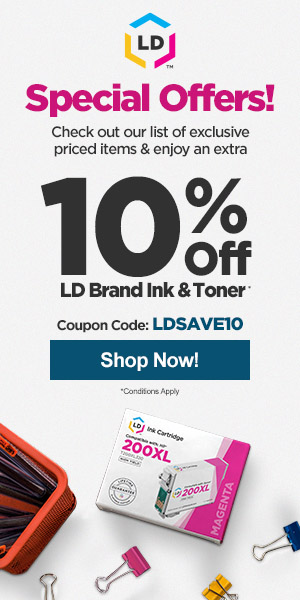

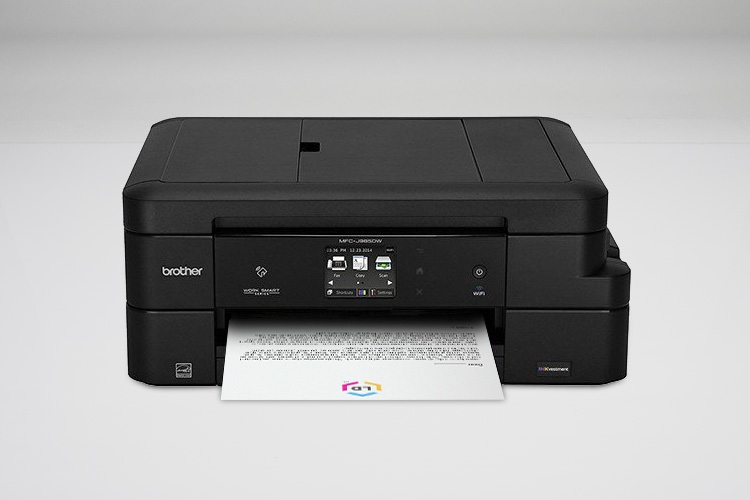


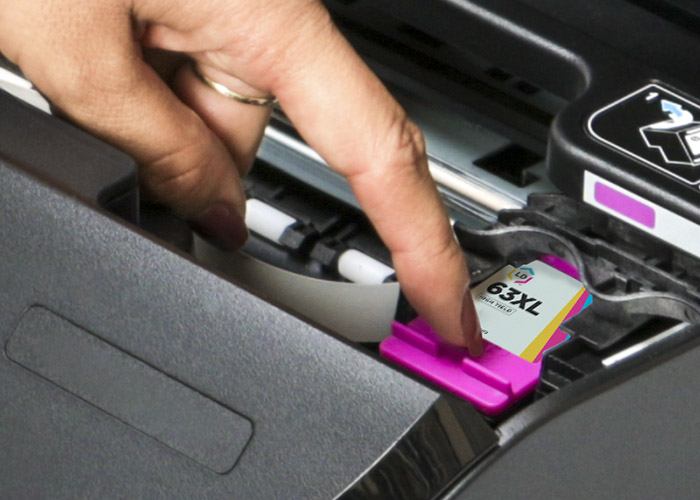
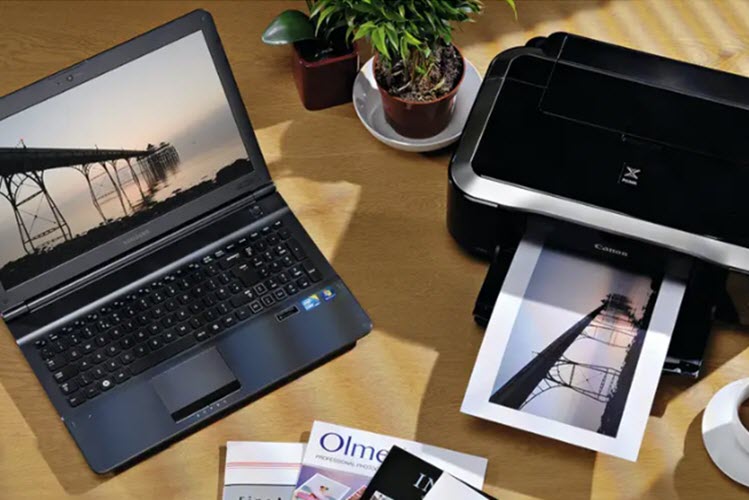
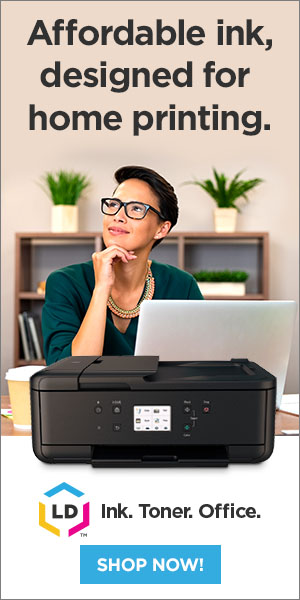
I am looking for the best quality printer for use for printing photos only. I have used regular home use printers and they wear out to quickly and the picture quality starts good but suffers as the life of the printer goes on. I have a small business and will probably only need to print about 50 photos a month. What do you suggest. I am also concerned with cost of replacement ink/cartridges/toner.
Hi Michelle, if you need high quality photo prints, the Canon PIXMA Pro series, like the Pro-100, are a good option. Our CLI-42 cartridges are inexpensive but you’ll need to replace eight of them (more cartridge colors produce better looking color photos), so that’s something to keep in mind! You can find the cartidges for that series here: https://www.ldproducts.com/Canon/Ink-Cartridge/PIXMA/PRO-100/8488-Printer.html
I’m looking for a good color laser printer. I’ve used OKI’s previously which have typically produced high- quality colors… I’m looking to replace my OKI but I’ve read that the current generation of OKI do not print that well such as the OKI C532dn. I know many people like the HP but previously comparing my OKI to HP, the OKI would typically blow it away.
Anyways – any suggestions? Stay with OKI or go with something else?
If you like Okidata quality over any other brand then I suggest you stick with Okidata. Before you settle on a printer model, it helps to check if you can easily get replacement cartridges and parts for it.
I’m looking for high quality color prints to use for product labels. I need very high resolution. I’m leaning toward inkjet but worried about the lack of clarity for text and “bleeding.” I don’t have a high output each month and am not as concerned with cost as I am with quality.
I looking for a printer that will print my photos on matte card stock to make note cards. I need very clean, clear, vivid printing. I would like to have my photo bleed off the page so I don’t have to have gripper space on my card. I am lost on how to find the printer that fits my criteria!
It sounds like you need a photo printer maybe a Canon or Epson. I recommend the Canon PIXMA Pro 100 or the Epson Artisan 1430. If you have more questions, feel free to email me at [email protected].
I run a very small business (micro business). I write engineering reports, about 2 – 3 per week which include colored images.
I find that my Epson WF7510 does not produce true colors which tend to have too much red through them.
I have cleaned the nozzles and the head both through the software and actually manually flushing the nozzles and head.
I have tried different brand ink cartridges including genuine Epson but nothing seems to help.
When I purchased the printer new it did give better colors.